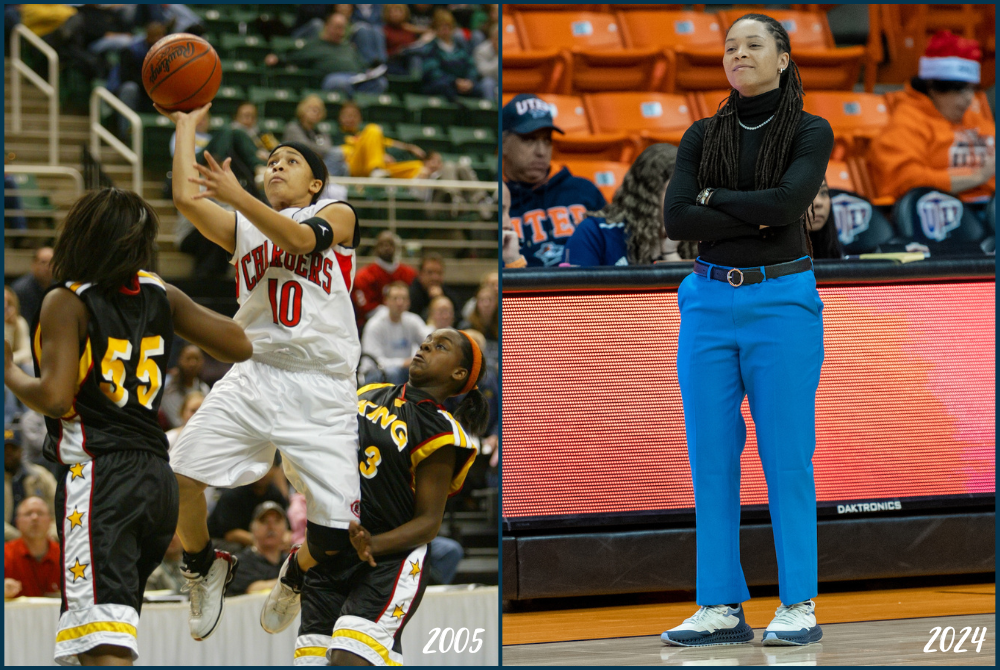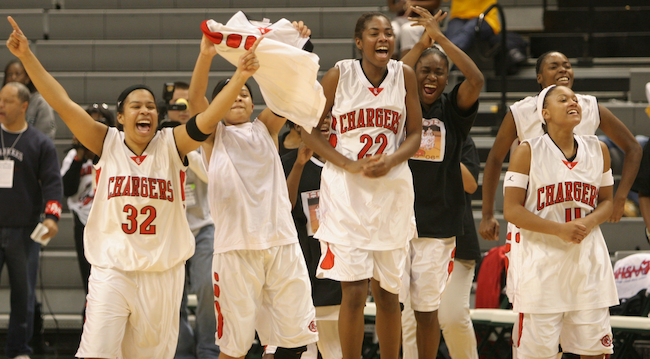
Working Through Transfer Trends
December 2, 2015
By Jack Roberts
MHSAA Executive Director
One of the responsibilities that schools have asked organizations like the MHSAA to execute is the management of transfer student eligibility. Historically, many associations have linked eligibility to residence ... thus, for some the regulation has been called the “Residency Rule” or “Transfer/Residency Rule,” not merely the “Transfer Rule.”
Over the years, as society became more mobile and families less stable, these rules became more and more complicated; and now, for most state high school associations, this is the regulation that consumes the most (or second) most pages of their handbooks. Over the years, this has also been the regulation most frequently challenged in court.
Over the years, some states have relaxed their transfer rule and others have refined their transfer rule. In either case, the transfer rule remains an imperfect rule, an imperfect net. Sometimes this net snags students who should not be made ineligible, and for those situations all associations have arranged some kind of waiver or appeal process.
And sometimes, and much less easily solved, the net fails to catch the situations it really should ... the transfers that are not hardship related or the result of some very compelling educational need, but those that are obviously for athletic reasons. It is those that we have been most focused on in Michigan.
Our first effort to get at the most problematic transfers was the adoption for the 1997-98 school year of what we called the “Athletic-MOTIVATED Transfer Rule” ... Regulation I, Section 9(E). Examples of an athletic-motivated transfer are included in the rule. The rule only applies to transfer students who do NOT meet any of the stated exceptions for immediate eligibility and are ineligible for one semester under our basic transfer rule. They become ineligible for 180 scheduled school days if there is a finding that the transfer was more for athletics than any other compelling reason.
This effort has not been successful enough because it requires a school that loses a student to another school to promptly allege to the MHSAA office, with supporting documentation, that the transfer was more for athletic reasons than any other compelling reason. The receiving school then must respond to those allegations. Then the executive director makes the decision. The unfortunate result of applying this rule is that it usually causes hard feelings between the schools, and hard feelings toward the executive director by the school decided against. In 17 years, schools have invoked this rule only 45 times.
Our more recent effort to address the most egregious athletic transfers resulted from requests from the coaches associations for wrestling and basketball, which were watching too many students change schools for athletic reasons, usually related to an out-of-season coaching relationship. The new rule – the “Athletic-RELATED Transfer Rule” – is Regulation I, Section 9(F). The difference between Section 9(E) and the newer Section 9(F) is that in 9(F) one school does not have to make and document allegations before staff can act. If MHSAA staff discover or are informed of any of the circumstances listed in 9(F), we can act. Again, the rule only applies to those transfer students whose circumstances do NOT meet one of the automatic exceptions. It applies only to students who are ineligible for a semester under the basic transfer rule. If there is a finding that one of the athletic related “links” exists (usually an out-of-season coaching relationship), then this transfer student who would be ineligible for one semester is made ineligible for 180 scheduled school days.
So far, it appears that 9(F) may be a better deterrent than 9(E). It has been referenced when students are rumored to be transferring, and it has stopped many of those transfers before they occur. We expect 9(F) to be an even better deterrent in 2015-16 because the rule has been broadened to apply to administrators and parents (not just coaches) and to address directing and coordinating athletic activities (not just coaching).
We have said that if this latest effort does not succeed in slowing athletic transfers, then the next step is 180 days of ineligibility – at least in any sport the student played in high school previously – for all transfer students who do not qualify for an exception that permits immediate play. I fear that would catch far too many students who should not be withheld so long from competition and could lead to a period like the early 1980s when the MHSAA, at the request of the state principals association, adopted the core of the transfer rule we have today and which resulted in a period of busiest litigation for the MHSAA when, at one time, the association had more than a dozen cases in court simultaneously on transfer matters. We’ve got to make the current rules work – with tweaks, perhaps; but not with radical revision.

High School 'Hoop Squad' Close to Heart as Hughes Continues Coaching Climb
By
Keith Dunlap
Special for MHSAA.com
July 11, 2024
Jareica Hughes had a Hall of Fame collegiate basketball career playing at University of Texas-El Paso and has played professionally overseas, but her most prized possession is something she earned playing high school basketball in Michigan.
 A standout at now-closed Southfield-Lathrup High School during the early-to-mid 2000s, Hughes proudly displays a signature symbol of Lathrup’s Class A championship team in 2005.
A standout at now-closed Southfield-Lathrup High School during the early-to-mid 2000s, Hughes proudly displays a signature symbol of Lathrup’s Class A championship team in 2005.
“I have my state championship ring on me right now,” said Hughes, now an assistant head coach for the women’s basketball program at UTEP. “I wear this ring every single day. Not so much for the basketball aspect. Inside of the ring it says ‘Hoop Squad.’ It’s more the connection I’ve had with those particular young ladies. Friends that I’ve known since I was kid. Every once in a while when we talk, we go back in time.”
Believe it or not, Hughes and her high school teammates next year will have to go back 20 years to commemorate a run to the title that started when they were freshmen.
It was a gradual build-up to what was the first girls basketball state championship won by a public school in Oakland County. Lathrup, which has since merged with the former Southfield High School to form Southfield Arts & Technology, remained the only public school in Oakland County to win a state girls basketball title until West Bloomfield did so in 2022 and again this past March.
Lathrup lost in the District round to Bloomfield Hills Marian during Hughes’ freshman year, and then after defeating Marian in a District Final a year later, lost to West Bloomfield in a Regional Final.
When Hughes was a junior, the team got to the state’s final four, but a bad third quarter resulted in a heartbreaking one-point Semifinal loss to eventual champion Lansing Waverly.
A year later, when Hughes and other core players such as Brittane Russell, Timika Williams, Dhanmite’ Slappey and Briana Whitehead were seniors, they finished the job and won the Class A crown with a 48-36 win over Detroit Martin Luther King in the Final.
However, the signature moment of that title run actually came during the Semifinal round and was produced by Hughes, a playmaking wizard at point guard who made the team go.
Trailing by three points during the waning seconds of regulation against Grandville and Miss Basketball winner Allyssa DeHaan – a dominant 6-foot-8 center – Hughes drained a tying 3-pointer from the wing that was well beyond the 3-point line.
Lathrup went on to defeat Grandville in overtime and prevail against King.
Hughes said the year prior, she passed up on taking a potential winning or tying shot in the Semifinal loss against Waverly, and was reminded of that constantly by coaches and teammates. “I just remember in the huddle before that shot, that just kept ringing in my mind,” she said. “That was special. I cried for weeks not being able to get a shot off (the year before) and leaving the tournament like that.”
Growing up in Detroit, Hughes got into basketball mainly because she had five older brothers and an older sister who played the game. In particular, Hughes highlights older brother Gabriel for getting her into the game and taking her from playground to playground.
“I’m from Detroit,” she said. “We played ball all day long. Sunup to sundown. When the light comes on, you had to run your butt into the house.”
 Hughes played for the Police Athletic League and also at the famed St. Cecilia gym in the summer, developing her game primarily against boys.
Hughes played for the Police Athletic League and also at the famed St. Cecilia gym in the summer, developing her game primarily against boys.
“My first team was on a boys team,” she said. “I was a captain on a boys team.”
The family moved into Lathrup’s district before she began high school.
Once she helped lead Lathrup to the 2005 championship, she went on to a fine career at UTEP, where she was the Conference USA Player of the Year twice and helped lead the Miners to their first NCAA Tournament appearance.
Hughes still holds school records for career assists (599), steals (277) and minutes played (3,777). On Monday, she was named to Conference USA’s 2024 Hall of Fame class.
After a brief professional career overseas was derailed by a shoulder injury, Hughes said getting into coaching was a natural fit.
“I had to make the hard decision, and I knew as a kid I wanted to be around basketball,” she said. “Once I made that decision (to quit), I knew I was going to coach.”
Hughes started coaching in the Detroit area, first serving as an assistant at Southfield A&T from 2016-20 and then at Birmingham Groves for a season. She then served as interim head coach at Colby Community College in Kansas before being named an assistant at UTEP in May 2023, a month after her former coach Keitha Adams returned to lead the program after six seasons at Wichita State.
While fully immersed in her job with UTEP, Hughes’ high school memories in Michigan certainly aren’t going away anytime soon – especially with the 20th anniversary of Lathrup’s championship coming up.
“We are still close friends because we all essentially grew up together,” she said. “They are still my friends to this day.”
2024 Made In Michigan
July 10: Nightingale Embarking on 1st Season as College Football Head Coach - Read
June 28: E-TC's Witt Bulldozing Path from Small Town to Football's Biggest Stage - Read
PHOTOS (Top) At left, Southfield-Lathrup’s Jareica Hughes drives to the basket against Detroit Martin Luther King during the 2005 Class A Final; at right, Hughes coaches this past season at UTEP. (Middle) Hughes, second from left, begins the championship celebration with her Lathrup teammates at Breslin Center. (UTEP photo courtesy of the UTEP sports information department.)

